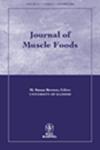The effects of supplementing Langshan breeding hen diets with selenium (Se) and methionine (Met) on antioxidant and gel properties in the chick myofibrillar protein were assessed. Four hundred and fifty hens were randomly divided into nine treatments with five replicates each treatment and fed 1 of 9 corn soybean diets with 0, 0.30 and 0.60 mg Se/kg from Se-yeast and 3.2, 4.0 and 5.4 g Met/kg from DL-methionine, respectively. After incubation, 250 chickens each treatment were randomly divided into five replicates and fed the same diet. At 21 days old, two male chicks each replicate were slaughtered. The Met and Se supplementations of the hen diets increased the muscle tissue Se content and decreased disulfide bond and protein carbonyl contents in the muscle. The higher levels of Met and Se (5.4 g/kg Met and 0.60 mg/kg Se) significantly increased reactive sulfhydryl content in the muscle. The intermediate levels of Met and Se (4.0 g/kg Met and 0.30 mg/kg Se) significantly increased gel hardness and water-holding capacity of the gel and the higher levels of Met and Se (5.4 g/kg Met and 0.60 mg/kg Se) decreased gel hardness and water-holding capacity of the gel to an extent. The conclusion was drawn that 0.30 mg/kg Se and 4.0 mg/kg Met supplementations of the hen diets could improve the protein gel and antioxidant properties in the chick to an extent.
Protein oxidation is detrimental to meat quality. Nowadays, the most obvious strategy is that various antioxidants have been used to meat products. However, various mechanisms and substances in the body can protect against oxidation. The antioxidant system could be established in advance during the embryonic period, utilizing the micronutrients present in the egg, and ultimately dependent on the hen diet. This appears to have potential in the meat industry once it is proved to be feasible.


